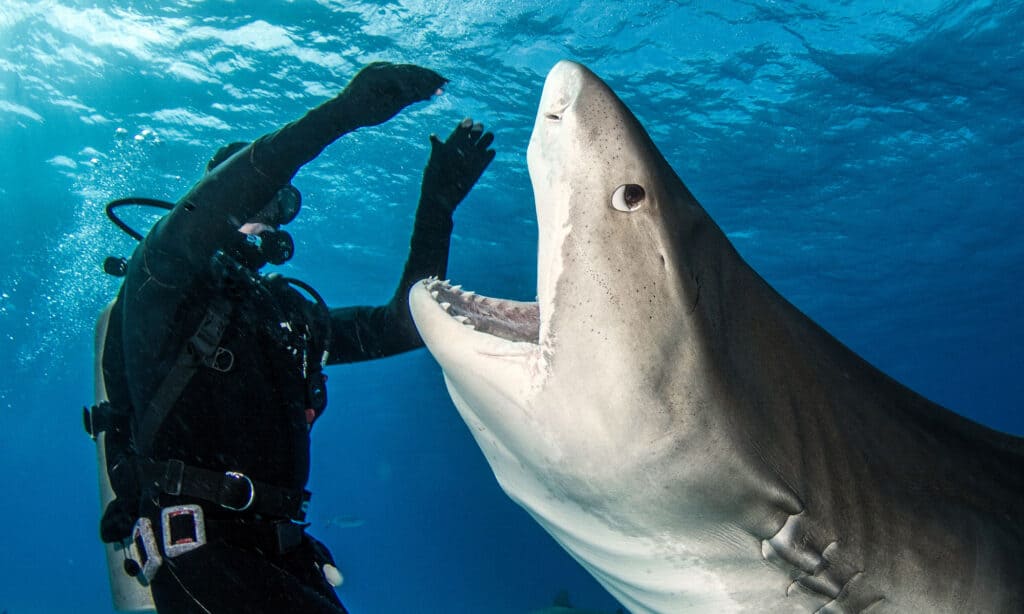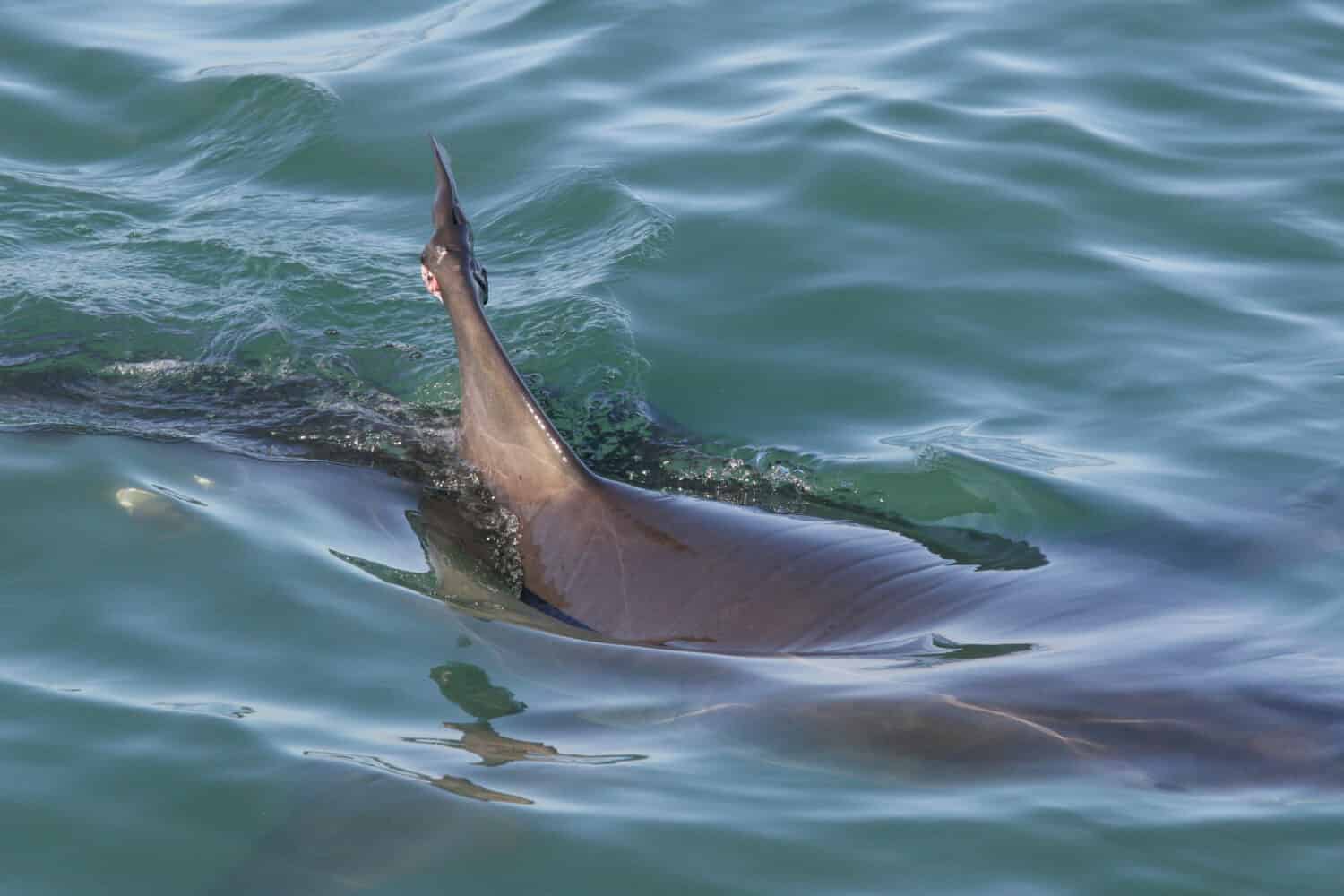Key Points:
- A response called tonic immobility renders a shark temporarily inactive, very much like hypnosis.
- When divers stimulate the small sensory pores on a shark’s snout, they can manually induce this catatonic state. Researchers frequently use tonic immobility to calm them.
- In this video, a shark handler named Eli can be seen putting a tiger shark in tonic immobility in order to tag it.
National Geographic has been teaching us about animals for decades. In a video uploaded to YouTube, we see a shark handler named Eli surrounded by tiger sharks. One shark in particular continues to get a little too close to him.
Eli and his team are in the water to tag these sharks. How does one handle a shark that isn’t behaving as expected? Well, Eli puts this particular tiger shark in something called tonic immobility. Scientists do this by stimulating electrical sensors located near the animal’s jaw.
Click Below to Check Out the Video!

©Protasov AN/Shutterstock.com
Can Sharks Really Be Put Into a Trance State?

When divers stimulate the small sensory pores on a shark’s snout, they can manually induce this catatonic state.
©Tomas Kotouc/Shutterstock.com
A response called tonic immobility renders a shark temporarily inactive, very much like hypnosis. Naturally occurring trance-like states are possible. In under 60 seconds, sharks typically go into tonic immobility. They can stay in this position for up to 15 minutes if left alone.
When divers stimulate the small sensory pores on a shark’s snout, they can manually induce this catatonic state. When addressing sharks, researchers frequently use tonic immobility to calm them. By taming them, you can lessen the amount of struggle and damage risk.
This action disorients the shark. Humans can then safely flip these creatures onto their backs. A shark begins to breathe deeply and rhythmically as its muscles unwind. They release the shark after it emerges from this trance-like state.
What Is the Purpose of Tagging Sharks?

There are three main types of tags used on sharks and rays.
©Alessandro De Maddalena/Shutterstock.com
Experts mark sharks with custom-made tags that have specific purposes as part of a research technique called shark tagging. Consider the ID tags that are attached to the dorsal fin and are exclusively utilized for identification.
Additionally, one can use acoustic tags, which transmit a signal to a fixed receiver that uniquely identifies the tag. These tags offer details about particular habitats used by sharks, yet they can also offer little amount of detail on long-distance migration.
The satellite tags, a more modern innovation, offer the shark’s geolocation anywhere it is while offering details on migratory patterns or travel over long distances.
How Do You Tag Sharks Without Harming Them?

OCEARCH can track tagged sharks throughout the ocean.
©iStock.com/Martin Heyn
As some research states, the technique of placing telemetry tags on sharks is neither excruciatingly painful nor unpleasant. Sharks don’t have a blood supply or nerve cells close to the outermost portion of their fins.
Therefore when researchers perform this action properly, putting a tag in this location is less painful than getting an ear piercing, despite the fact that there is inconsistent evidence that fish may sense pain. When placing tags delicately on their dorsal fins, sharks’ health and safety are the top priority. The purpose of this connection is to ultimately slip off the shark’s fin without harming it.
The photo featured at the top of this post is © HQuality/Shutterstock.com
Thank you for reading! Have some feedback for us? Contact the AZ Animals editorial team.






